Websites take businesses forward. A modern, clean site not only attracts new customers but also enhances their experience and streamlines sales through an online store. Building your own website today is straightforward. Website builders empower you to create pages that echo your brand’s essence. They’re equipped with business tools for smooth shipping and checkout processes, plus marketing perks to boost your visibility. This post unpacks everything you need to craft a business website with Shopify or another website builder.
Today, having a website is crucial for businesses to thrive and grow. A well-designed and user-friendly website can attract new customers and improve their overall experience, while also making it easier for them to make purchases through an online store.
Fortunately, building a website has become a much simpler process thanks to website builders. These platforms provide the necessary tools and features to create professional-looking pages that reflect your brand identity. In addition, they offer business tools such as seamless shipping and checkout processes, as well as marketing features to increase your online visibility.
One popular website builder option is Shopify. Shopify provides a comprehensive solution for creating and managing an e-commerce website. It offers a wide range of customizable templates and themes, allowing you to create a website that suits your business needs and reflects your brand’s essence. Shopify also provides tools for managing inventory, processing payments, and tracking sales data, making it a robust platform for running an online store.
However, Shopify is not the only website builder available. There are numerous other options to consider, each with its own set of features and pricing plans. Some popular alternatives include Wix, Squarespace, WordPress, and BigCommerce. The choice ultimately depends on your specific requirements and budget.
To get started with building your business website, you’ll need to choose a website builder that aligns with your needs. Once you’ve selected a platform, you can explore its available templates, customize them to match your brand, and add content and product listings. Most website builders have intuitive drag-and-drop interfaces, making it easy to design your site without any coding knowledge.
Additionally, website builders often offer built-in SEO tools, integration with social media platforms, and options for collecting customer feedback. These features can help boost your website’s visibility and improve user engagement.
In conclusion, creating a business website with a website builder like Shopify or another platform is an effective way to establish an online presence, attract customers, and streamline the sales process. With the right tools and features, you can create a modern, clean website that aligns with your brand and drives business growth. Checkout this blog post “Unleashing the Potential How to Boost Shopify Store Conversion Rates and Skyrocket Sales.”
From Zero to Hero: How to Create a Stellar Website for Your Business.
1. Define The objective and goals of your website.
Kickstart the website creation process by setting clear goals. Decide on what success looks like for your business. This vision will shape your priorities and dictate the features you need to focus on first.
Businesses typically create a website to:
- Market and sell products
- Communicate their brand’s message
- Share company news and updates
- Present customer feedback
- Convert site visitors into potential customers
After you decide on your goals, plan your approach. For example, if selling physical items is your aim, think through your inventory layout, how you’ll highlight your products, and the way you’ll handle sales.
Remember, a website is a constant work in progress. Clear goals and a step-by-step plan give your building process direction and intent.
2. Choose a website builder
For a quick website launch, choose a website builder. These are online platforms that help you design your site without needing to code. They offer a visual way to assemble your website—just click and place items where you want them. Look for website-building software that offers:
- A simple drag-and-drop interface
- Pre-made templates for quick setup
- Customization options
- A variety of images and videos
- Tools for optimizing your site and boosting sales
As your business grows, you might want to add unique features to your site. This could mean tweaking the code itself. A solid website builder provides the flexibility to edit HTML and CSS, giving you more control when you’re ready. Also Read this blog post “How Successful Entrepreneurs Sell on Etsy.”
Shopify website builder
Shopify offers a website builder that lets you create all kinds of sites, from online stores to personal blogs, portfolios, and more.
As a user, you get access to a range of customizable, mobile-friendly themes, ensuring your site looks great on any device. You also benefit from 24/7 live support, ready to assist you in crafting your website exactly how you envision it.
Plus, Shopify provides a comprehensive suite of tools to help you connect with your audience and grow your business without involving third-party services.

Other website-building solutions
Besides Shopify, there are several other renowned website builders available, such as Wix, Squarespace, and WordPress. Each of these platforms brings its own set of advantages to the table.
It’s crucial to consider your website’s objectives and identify which features are paramount for your needs. Look into how user-friendly they are, the variety of design options they offer, and the extent of customization they allow
For those who prefer drag-and-drop functionality, there are additional options to explore:
- Weebly: Known for its intuitive interface and a wide range of design templates.
- GoDaddy: Not just a domain registrar but also offers a user-friendly website builder with marketing tools included.
- 3dcart: Catering specifically to ecommerce sites with a focus on building a robust online store.
- Volusion: Another ecommerce-centered builder that offers comprehensive tools for setting up a store
3. Choose a suitable domain name.
Your domain name serves as your online locator, guiding customers to your virtual doorstep. A well-chosen domain not only lends legitimacy to your business but also boosts your visibility in search results
Tips for picking a domain name:
- Incorporate relevant keywords to improve search relevance.
- Opt for a concise, brand-aligned name.
- Try to secure a top-level domain like .com for broader appeal.
- For local impact, think about a country-specific domain such as .ca or .us.
Registering your domain name
Check if your desired name is free by using a hosting provider’s search function, like Shopify’s tool for domain availability.
If the name is open, register it via hosting services such as Shopify, Google Domains, or GoDaddy. All providers offer a uniform list of domain names.
If your first choice is taken, think creatively. Take inspiration from Biko, which uses “ilovebiko.com”—memorable, straightforward, and engaging.
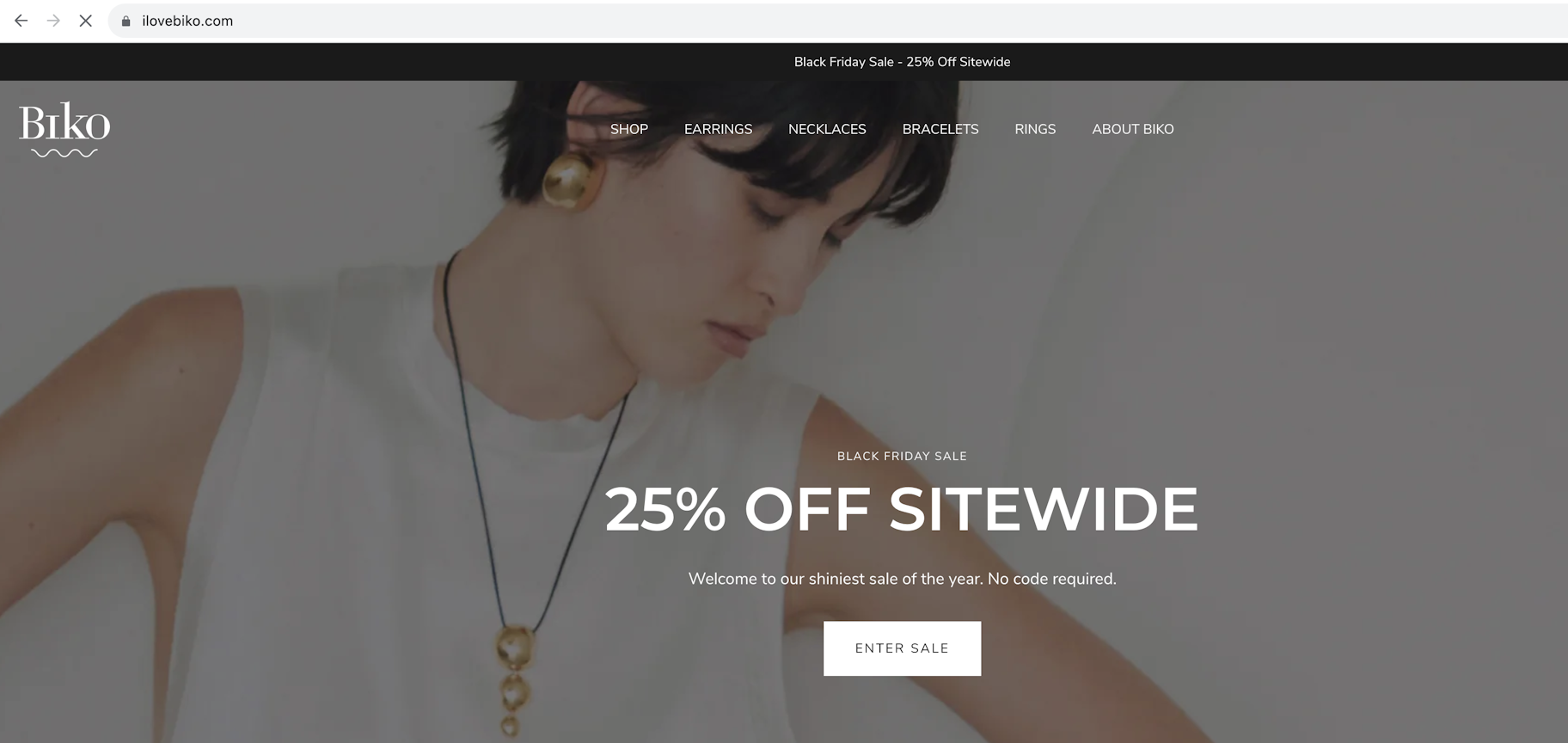
If your top pick is unavailable, you might add a suffix or try a different extension. Remember, changing your domain name later can complicate your SEO efforts, so make your choice with the future in mind.
4. Finalize a suitable web hosting provider.
When you build a website, it needs a home—a server where it lives. Web hosting services reserve this space for you.
Choosing a web host can seem daunting. You’ll encounter various pricing structures, data limits, and options for domain emails and storage space. And it’s hard to predict how fast your site will grow or what you might need down the line.
For online stores, consider web hosts specializing in ecommerce with features like:
- Quick-loading servers to provide a smooth experience for customers worldwide
- No limits on bandwidth to support your growing traffic without extra charges
- The ability to register your own domain to establish a distinct presence online
- Plenty of email forwarding options to streamline communication and present a cohesive brand image
- Payment Card Industry (PCI) compliance to protect your customers’ payment information
While most web hosting services cover these bases, we recommend Shopify for its fully hosted solution. “Fully hosted” means you don’t need to set up your own server—the web host stores and maintains your site’s data in the cloud. Checkout this interesting post “40 Best Ecommerce Websites with stunning designs”
5. Design your website layout.
When your hosting provider and domain are set, it’s time to decide on a website layout.
Many website builders offer a mix of free and premium themes tailored for different industries and content strategies. Shopify, for instance, has over a hundred options created by top designers. These themes are adaptable, easy to use, and allow for live previews during customization.
When picking a theme:
- Opt for versatility. Themes with multiple style options provide extensive customization flexibility.
- Evaluate built-in features. Choose themes with functions that meet your specific business needs. Themes with search bars are great for extensive inventories, and those with media sections highlight company achievements.
- Look beyond colors and fonts. Since you can change these elements later, focus more on layout and features.
- Experiment with different themes. If a theme doesn’t meet your expectations, switch it out without losing your content.
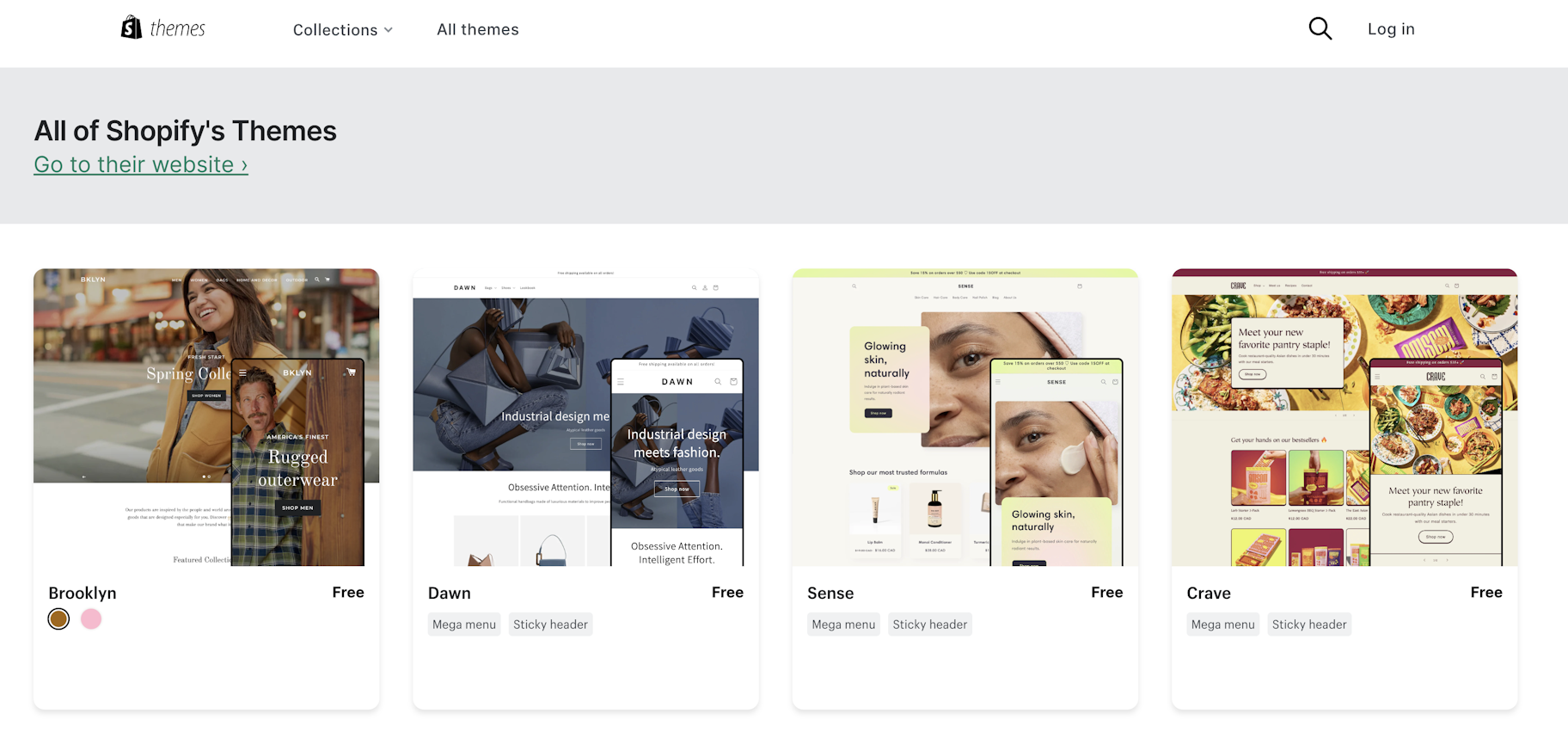
Remember, a well-chosen theme supports your SEO efforts and ensures a seamless experience across devices. For specialized design needs, consider hiring a Shopify Expert to optimize your site.
6. Build add on relevant pages.
Craft the right pages for your website’s purpose. If you’re launching an online store, prioritize product and collection pages. Restaurants will need pages for menus and booking tables. Real estate agents should include listings and a contact form.
Key web pages for a business website:
- Homepage: This is the first page most visitors will see. It should highlight your brand identity and direct visitors to important areas of your site with clarity and purpose.
- About page: Use this space to convey your business’s backstory, values, and the people behind the brand, which can resonate with customers and build trust.
- Contact page: Make it simple for website visitors to reach out with inquiries or support requests by providing contact information, including a form, email address, or phone number.
- Product pages: For every item you offer, there should be a dedicated product page with detailed descriptions, pricing, availability, and customer reviews to inform and encourage purchases.
- FAQ page: Help customers help themselves by answering the most common questions related to your business, products, or services, which can also reduce the volume of support queries.
- Policy pages: Clearly outline your business’s policies on shipping, returns, privacy, and terms of service to ensure transparency and legal compliance.
Create a content strategy for SEO
Ensure every page on your website serves a clear purpose and reflects your business’s focus. This approach lays the groundwork for your site’s authority within your niche. As you populate your site with content and visitors engage with it, search engines begin to recognize and categorize your pages.
This is the core of search engine optimization, or SEO. It’s when you fine-tune your content to align with the search terms and keywords your audience uses. Use keyword planning tools to identify terms closely related to your business, then integrate them into your content to improve your performance in search engine result pages.
7. Choose the right business tools.
If you’re building your site with Shopify, you can take advantage of business tools to expand its capabilities. The Shopify App Store has more than 8,000 apps that can connect your website with logistics platforms, social media channels, email service providers, and more.
Ideally, you should locate free Shopify apps that let you:
Choosing the right apps can significantly improve your store’s performance and customer satisfaction, paving the way for increased sales and business growth.
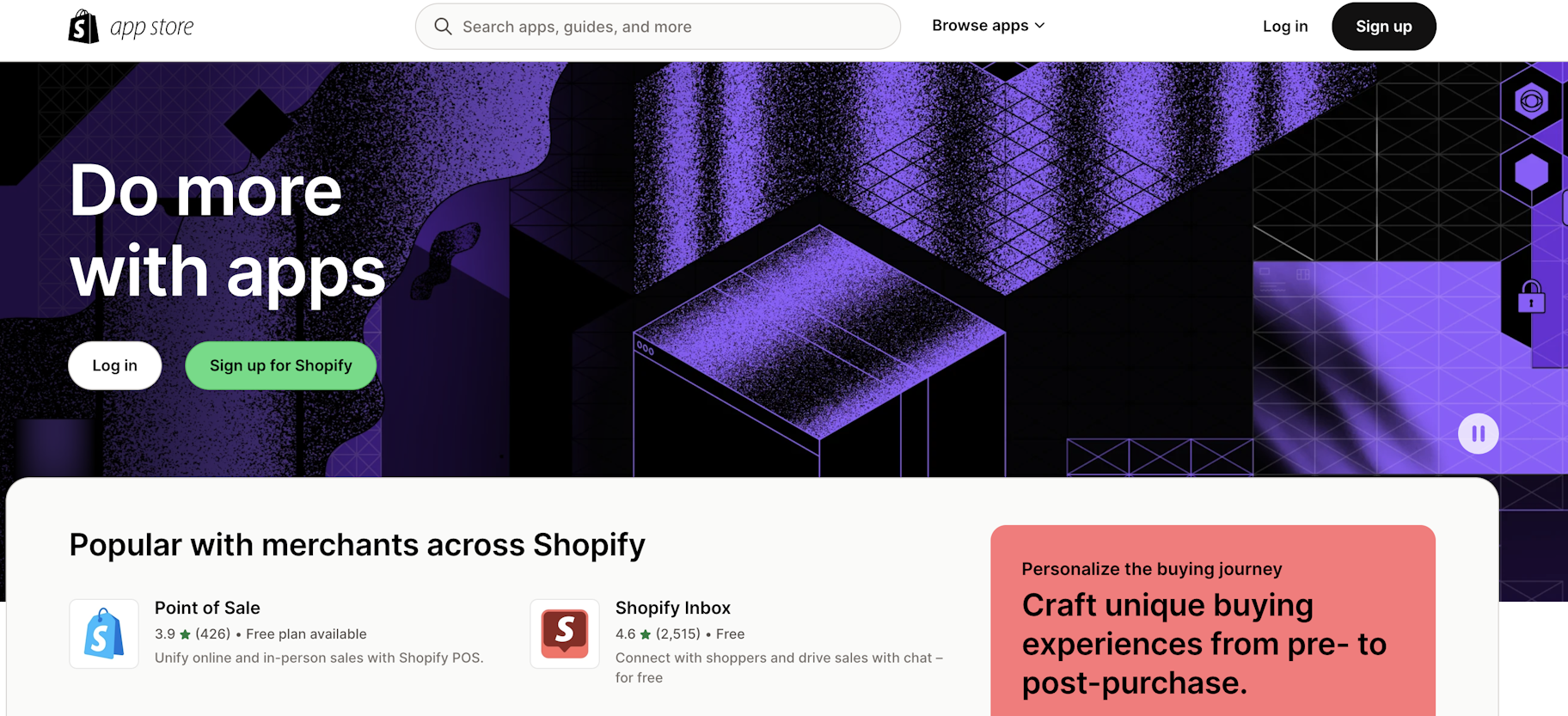
WebsitesToolz comes with a variety of upto 24 different widgets and social proof tools. Customize the background, icons, display and triggers as per your own choice. This social proof software tool stands out in terms of the customizations you can have. You can create notifications that look and sound exactly how you want them to, without a developer and without a single line of code. WebsitesToolz is not available as an app on shopify app store but you can integrate WebsitesToolz into your shopify store just by pasting a one line code.
Create manual and realtime social proof popup notifications. Customise the title and description of the popup notifications in a language of your choice. Show popups when somebody signs up, adds something to a cart or makes a purchase on any website including wordpress, wix, squarespace, shopify or woocommerce store. you can show realtime paypal and stripe transactons as popups on your website. Integrate with over 1000 applications using Zapier or webhooks.
Key Features:
- Product notifications: Create FOMO with number of people who have purchased a product.
- Video Popups: Build credibility and trust by showing youtube video testimonial popups on your website.
- Recent Activity: Show a live feed of manual and realtime activity happening on your site right now.
WebsitesToolz Pricing
WebsitesToolz pricing starts at $9/month ( and $6/month when billed annually) for up to 50,000 notifications impressions per month. This is definitely the best deal in the market considering all the customisations and features loaded.
8. Ready for the Launch.
Before launching your site, conduct a thorough test. Experience it as a customer, evaluating content, image quality, loading times, and overall user experience impartially.
Invite friends, family, or colleagues for additional insight. Ask them to explore your site using various devices and internet providers to identify any performance issues.
For instance, they might discover broken links that need fixing. Or, they may find that the site is not rendering properly on mobile devices. Gathering this feedback is essential for ironing out any kinks before your site’s official launch. Must read blog post “Top 60 Shopify Stores making heads turn.”
Creating a free website with Shopify
If you’re looking to create an online store or showcase your brand, Shopify’s website builder offers an immediate start.
Begin with its three-day trial at no cost, and continue to develop your website for just $1 per month over the initial three months.
Shopify doesn’t just help build your site—it also equips you with an array of tools to expand both your online and physical store’s reach.
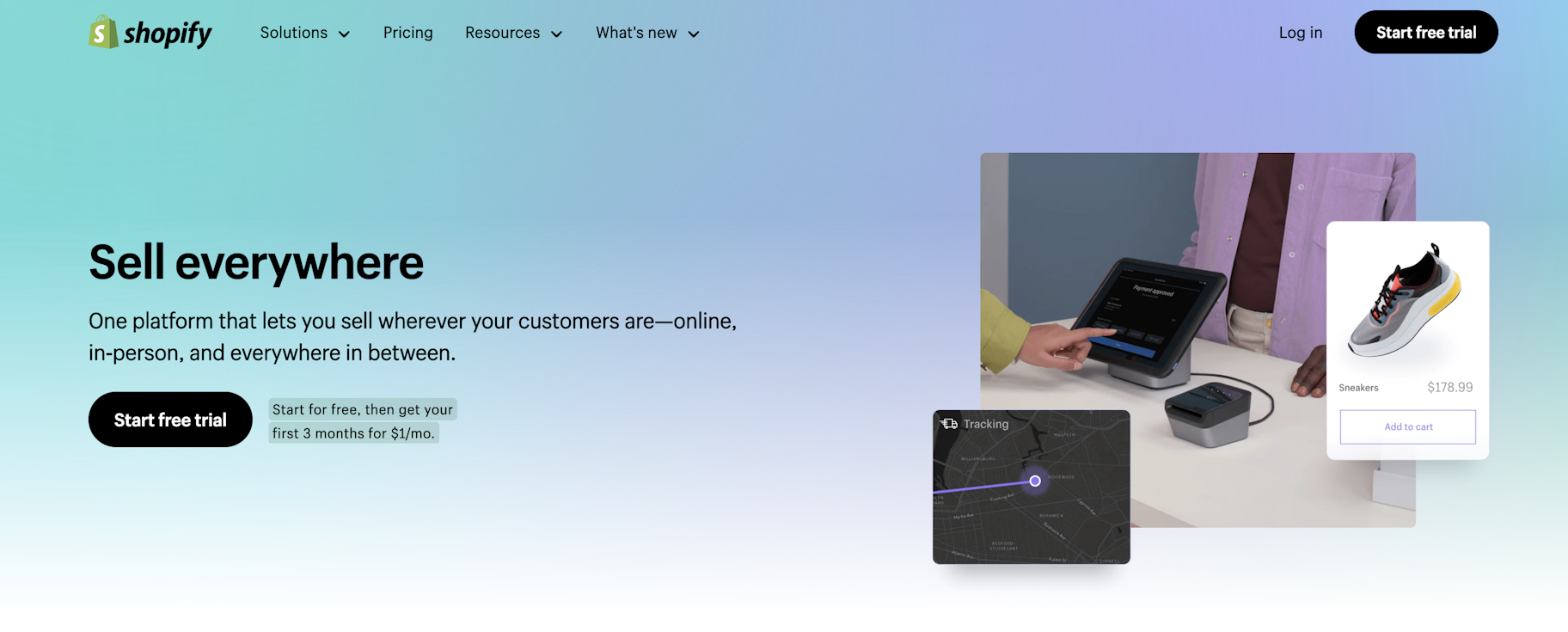
Here are the steps:
1. Create a Shopify account
Visit Shopify and sign up for a free trial. Provide an email address and your reason for creating a website. You can register a custom domain later, if required.
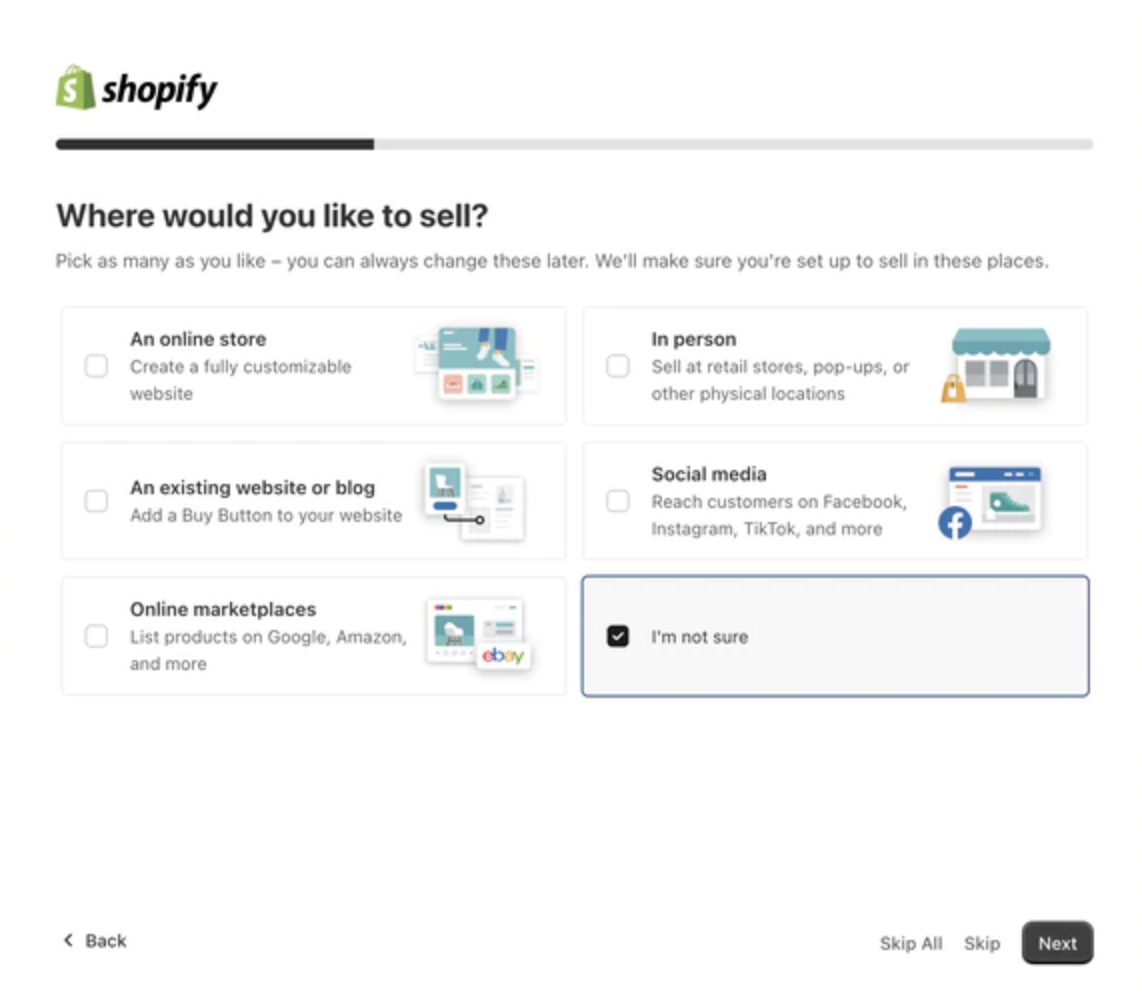
2. Update all site information.
Upon entering the store builder, you’ll see a menu on the left with links to various resources. Click Settings to personalize your website’s name, adjust the time zone, and set your preferred currency.
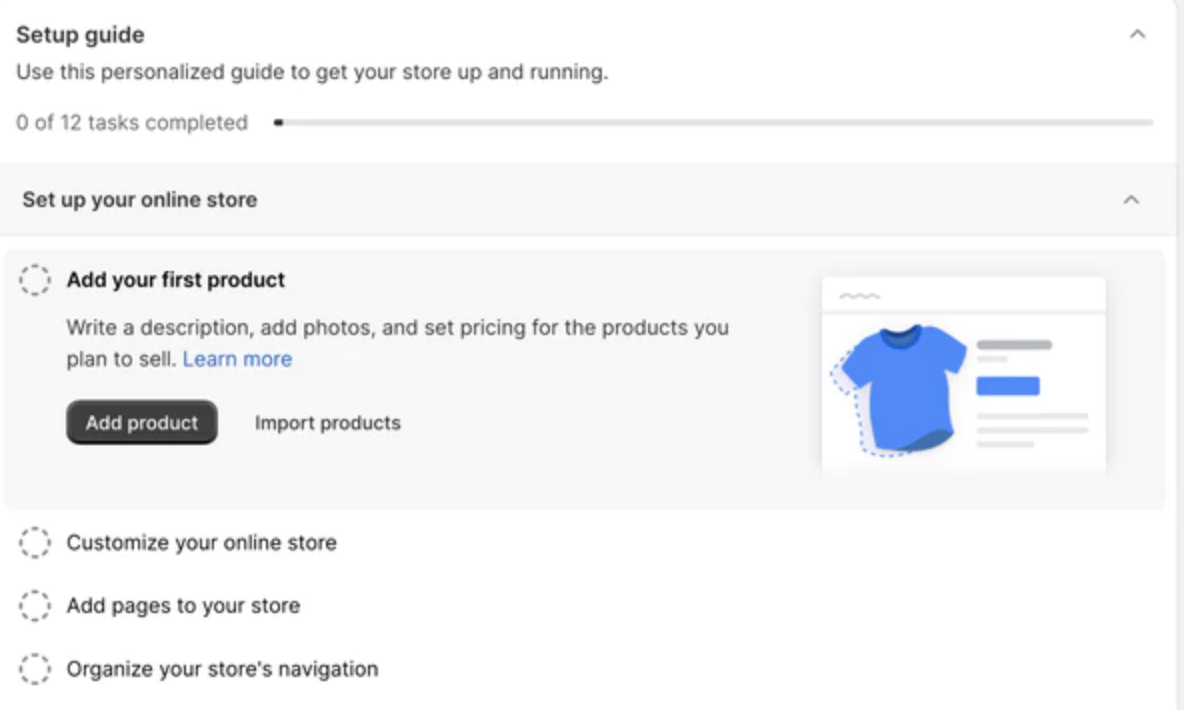
3. Pick a store theme.
You can immediately start adding products or choose a theme by clicking Customize Theme. Shopify offers a default theme with a seamless checkout process. For a unique design, browse additional themes or purchase a professional one from the Theme Store.
4. Customize your shopify store theme.
After theme selection, you might want to alter universal aspects, like color or fonts. Edit these using the Customize option, which also lets you set the logo, layout, and other elements.
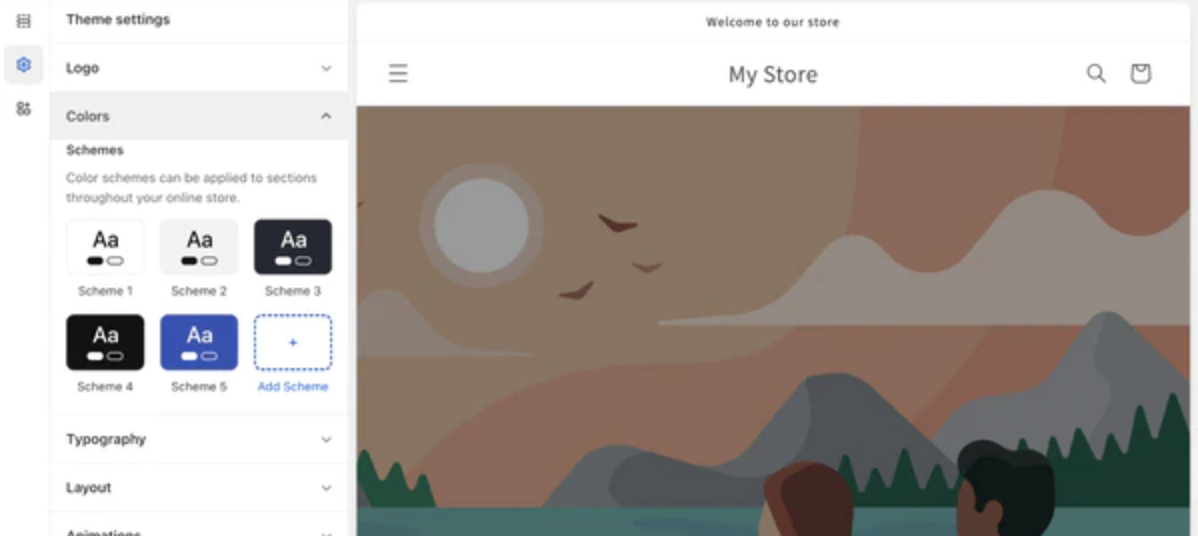
5. Create pages and posts
Whether you’re still in the live builder or following the setup guide, now’s the time to add pages. Write content for your Home and About Us sections. Consider posting a blog to convey more in-depth or personal information.
6. Add your products
With your store’s look complete, press the Products button to list your items. Add titles, descriptions, prices, images, and videos. Get organized with collections and categories for ease of navigation. Shopify accommodates your products, digital goods, services, and items from external vendors.
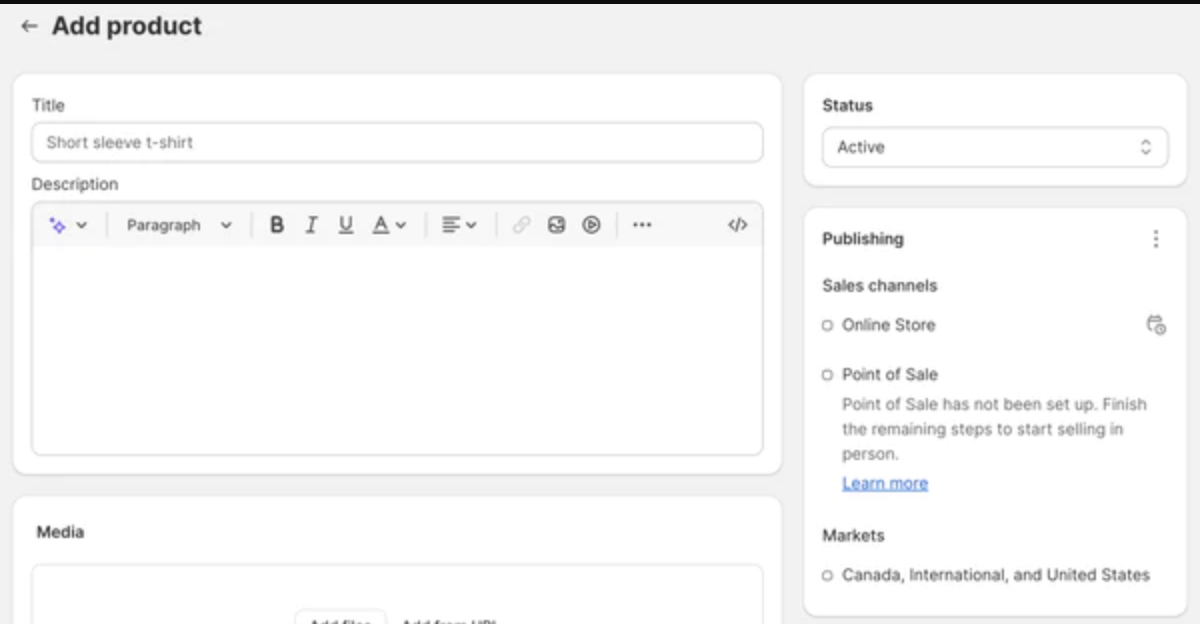
7. Set up a payment method
Activate a payment gateway before launching. In Settings or the setup guide, navigate to Payments to enable Shopify Payments or other providers to accept major payment method
8. Test and launch
Conduct a trial order to check functionality. Choose a plan that suits your needs to publish your site. As you grow more comfortable, explore Shopify features like shipping, marketing, and analytics to enrich your store’s functionality
Build and continue to grow your store.
Once your website is up and running, it’s not the end, but a fresh start. Keep it dynamic with regular updates, new features, and expanded content to stay ahead of the game. Taking these steps will ensure your site doesn’t just exist but grows consistently.

